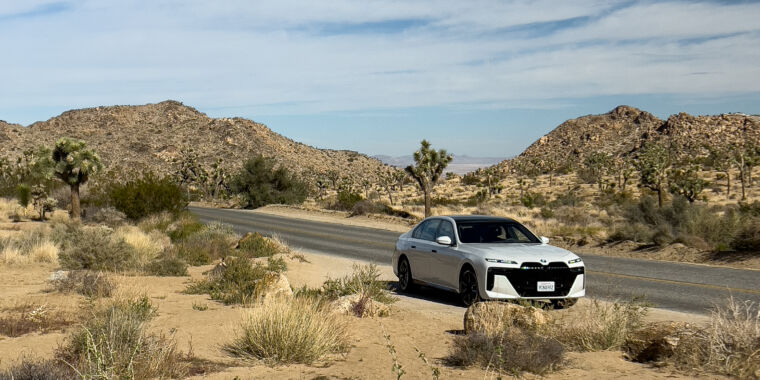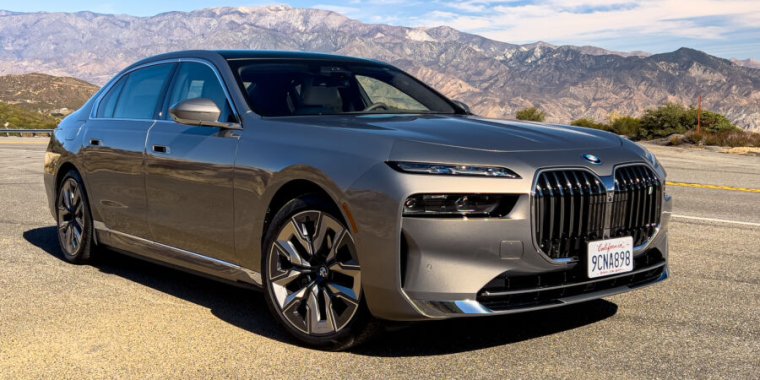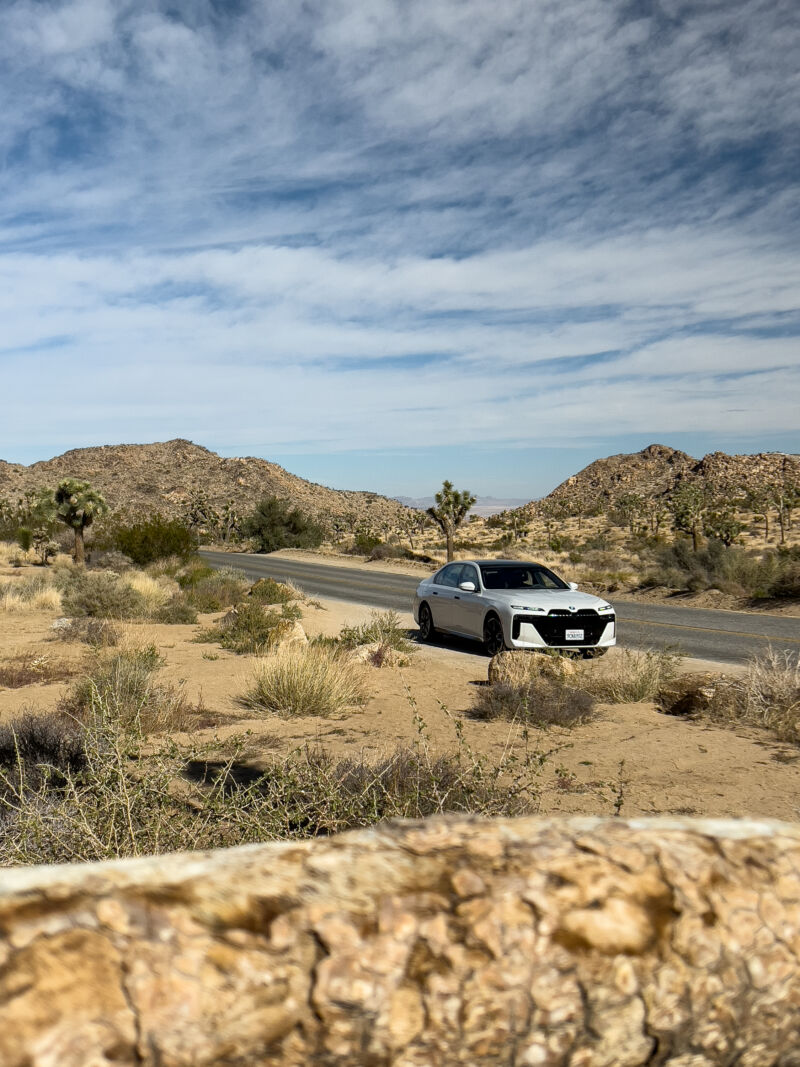
PALM SPRINGS, Calif.—”You want it to be one way… But it’s the other way.” I thought of Marlo Stanfield’s words from The Wire that morning. Much as I might like, I couldn’t just come to Palm Springs and drive the new BMW i7 without at least acknowledging that, for many, its time has not yet come. As much as I—or you—might want everyone to go electric, now, that isn’t happening, and won’t; not straight away.
Elsewhere on Ars, you can read our first take on that electric i7. Spoiler alert: pretty darn great. But most new 7 Series won’t be i7s; plenty will still be ICE sevens. And recognizing the world as it is, and not the world as I might want it to be, meant going for a drive in one of the gas burners.
Since the chief attraction of internal combustion in 2023 is going for very long drives that don’t involve charging stops, I decided to go for a long drive in a $113,600 760i xDrive. As luck would have it, BMW secured permits to film and take photographs within Joshua Tree National Park. Chances to do that don’t come along that often, and I hadn’t yet visited that park, so the plan seemed clear.
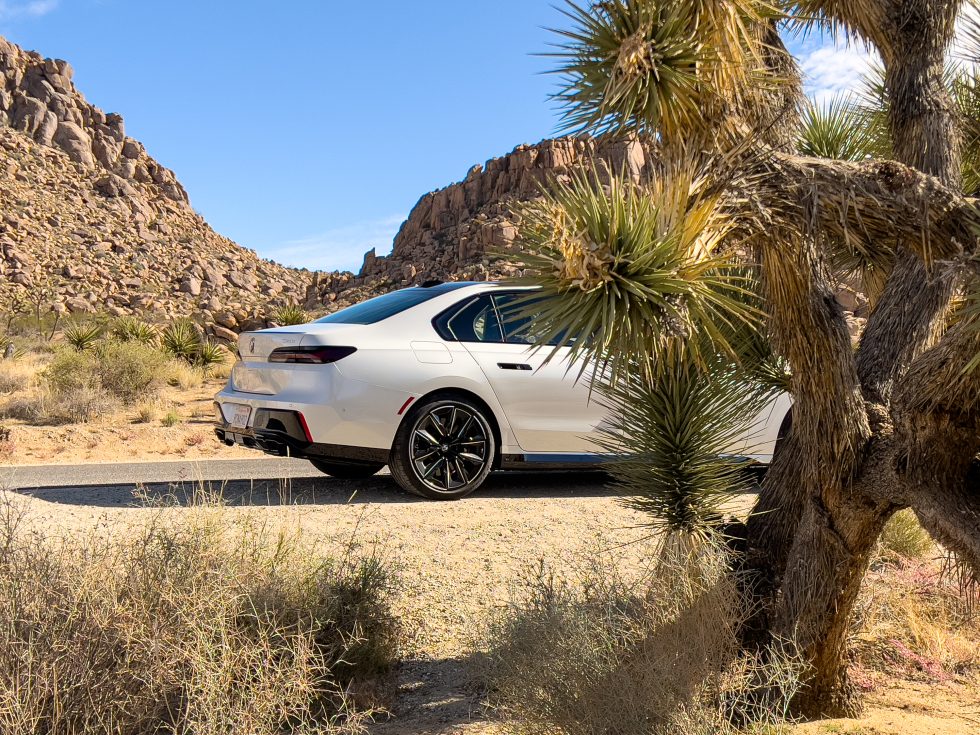
Jonathan Gitlin
The 760i is one of two gasoline-powered 7 Series that goes on sale now. It boasts a new 4.4 L turbocharged V8 which generates 536 hp (400 kW) and 553 lb-ft (750 Nm)—almost exactly identical in power and torque output to the electric i7. Like the i7, the 760i is all-wheel drive, but in this case, through an eight-speed transmission. There’s a more advanced implementation of the 48 V stop-starter—it might be time for us to stop calling these “mild hybrids”—that improves efficiency, and a host of mechanical upgrades inside the engine bay that add together and allow BMW to get V12 performance from a V8 instead.
Even a clever modern V8 like the 760i can’t rival an electric powertrain in terms of immediacy. Press the throttle pedal in this car—a pedal that, in this case, throttles the passage of air into the engine rather than current through a circuit—and it takes time for air to travel through intakes, it takes time for the turbochargers to scroll up, and it takes time for the pistons to travel up and down, up and down.
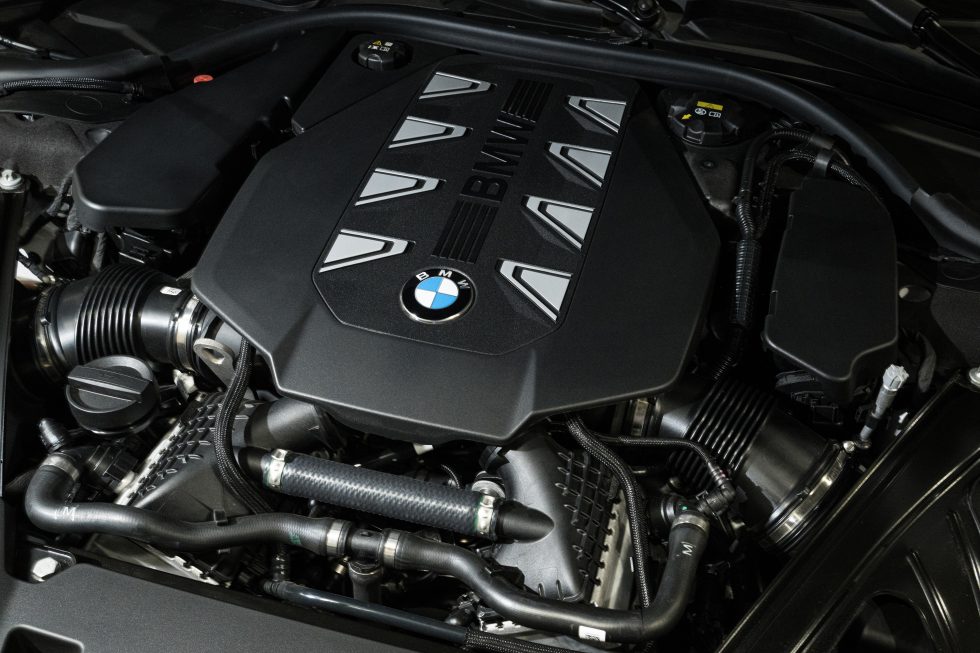
BMW
So there’s a very short but still perceptible delay or lag from pedal input to torque delivery compared to the electric car. It’s all less refined than the smooth and near-silent work of one of BMW’s electrically excited synchronous motors, but such are the compromises some are prepared to make, prioritizing refueling speed over luxurious efficiency.
Still, BMW’s hardworking engineers have compensated for the inadequacy of the internal combustion engine by dampening as much of the unpleasant noise, vibration, and harshness from the powertrain. What noise makes it through the sound-insulated interior is a pleasant but respectfully muted V8 warble that will probably be drowned out if you’re listening to music.

